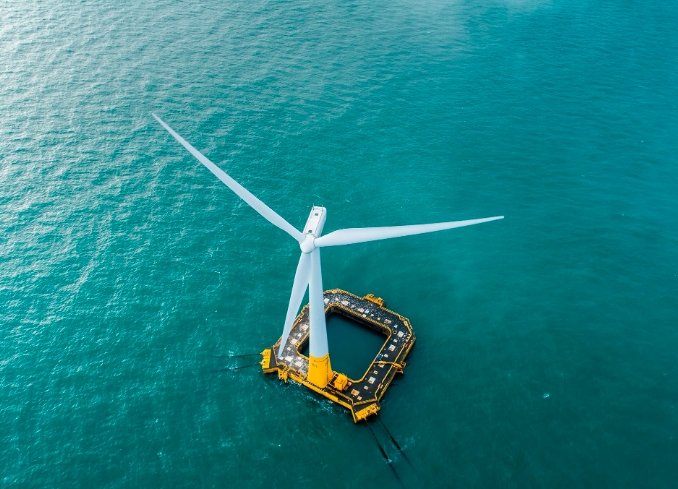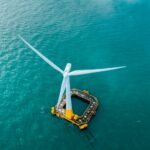Scotland stands ready to lead the world in floating offshore wind power, but success depends on upgrading key ports for assembly and maintenance. With over 40 gigawatts of potential from the ScotWind leasing round, these land-based hubs could create thousands of jobs and drive economic growth if investments keep pace.
Challenges Facing Scottish Ports Today
Scottish ports have played a supporting role in offshore wind so far, mainly handling final assembly of parts made abroad. Components often come from Europe or Asia, then get put together in places like Aberdeen before heading out to sea. This setup works for small projects, but floating wind demands more.
Take the Kincardine wind farm off Aberdeen’s coast. Its platforms were built in Spain and finished in Rotterdam, then towed to site. Lately, turbines from there needed heavy fixes, so crews towed them back to Rotterdam because local ports lack the right cranes and space. This shows clear limits in current setup, as deeper waters mean bigger, heavier structures that need special handling.
Experts point out that without quick upgrades, Scotland could miss out on the global shift to floating wind. Other countries, like those in the US and Norway, are already building dedicated facilities. Here, delays in maintenance raise costs and slow progress, hurting the push for net zero by 2045.

Major Investments Reshaping Port Infrastructure
Good news flows from recent funding that targets these gaps. The UK government just put £55.7 million into the Port of Cromarty Firth, turning it into the UK’s first spot for on-site floating turbine building at scale. This move aims to cut towing needs and boost local work.
Ardersier Port near Inverness leads the charge too. Its owners secured over £400 million for a full redo, including new quays and manufacturing space for floating foundations. Cerulean Winds picked it as a base for 3 gigawatts of projects in the North Sea. Construction started last year, with phase one quays ready by late 2025.
Other spots see action as well. Kishorn Port got multi-million pounds to handle floating wind gear, while Scapa Flow in Orkney snagged £5 million for a new hub. Aberdeen shared plans to become a national center during a visit from energy leaders. These steps break old cycles where ports wait for sure deals before spending.
- Key recent port investments include:
- £55.7 million for Cromarty Firth expansion.
- £400 million plus for Ardersier redevelopment.
- £5 million for Scapa Flow offshore wind hub.
- Multi-million funding for Kishorn floating wind support.
ScotWind and Growing Project Pipeline
The ScotWind round unlocked sites for up to 30 gigawatts, with more from INTOG for oil and gas links. Developers signed deals, and revenues hit £364 million profiled for 2025-26. But calls grow for probes into possible lost billions from low bids.
Projects ramp up fast. Inch Cape’s first export cable went in off the east coast, part of a 1.1 gigawatt farm. Pentland Floating Wind chose Stiesdal foundations, and a massive 4.1 gigawatt site got approval, enough to power all Scottish homes twice yearly. Aspen picks Ardersier for assembly on its 1 gigawatt setup.
These builds tie right into port needs. Floating tech suits deeper Scottish waters, where fixed bases won’t work. Grid upgrades, like £32 billion for 23 gigawatts, pair with this to connect power to homes and industry.
| Port | Investment Amount | Key Focus | Expected Completion |
|---|---|---|---|
| Cromarty Firth | £55.7 million | Floating turbine manufacturing | Ongoing, scale-up 2026 |
| Ardersier | Over £400 million | Assembly and operations for 3GW projects | Phase 1 late 2025 |
| Kishorn | Multi-million | Support for floating wind industry | 2025 enhancements |
| Scapa Flow | £5 million | New offshore wind hub in Orkney | Early development 2025 |
Economic Boost and Global Edge
Ports could spark a supply chain boom, from making blades to cables right here. Scotland eyes 11 gigawatts by 2030, with 45 gigawatts in the pipeline. This means jobs in the Highlands and beyond, plus exports to the US market.
Yet balance matters. Groups worry about seabird impacts and community input on big farms. Leaders stress careful planning to protect marine life while growing green jobs. Ties to recent events, like Hywind Scotland’s high output but maintenance tows, underline why local fixes speed things up.
Floating wind puts Scotland ahead in the clean energy race. With smart spends, ports turn potential into power that cuts bills long-term and fights climate change. Readers, share your thoughts on these changes and comment below to join the conversation on Scotland’s green future.


















